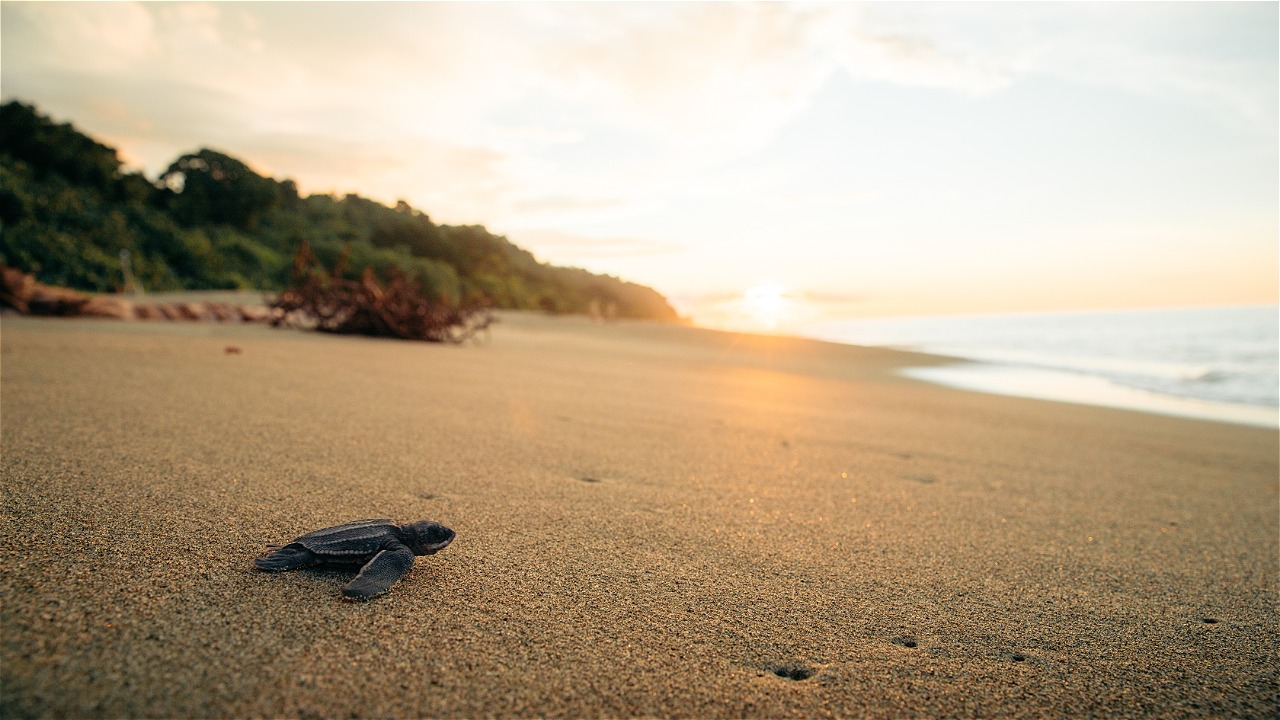THE LEATHERBACK TURTLE RETURNED NINE YEARS LATER
By Hadi V. Ferdinandus
Monitoring of leatherback turtles conducted from July 8 to August 17, 2013 at Jamursba-medi Wildlife Sanctuary Beach was fruitful. WWF Indonesia Monitoring Team Sausapor Office in collaboration with Papua State University found 34 female turtles. A total of 12 of them are new individuals and 22 others are old individuals that have been installed with the number Passive Integrate Transponder Tag (PIT Tag). Of the 22 old individuals, five of them were identified in the monitoring database as turtles that had come in 2004, 2005 and 2007, or six to nine years ago recorded as having laid eggs in Jamursba-medi. Nightly monitoring on foot recorded 273 leatherback nests on the longest leatherback nesting beach in the Western Pacific.
The PIT Tag is a chip embedded in the right shoulder muscle of the turtle that is useful for recording each turtle that docks and is recorded by the monitoring team. The numbering of leatherback turtle PIT tags is agreed upon at the international level by world turtle experts, for Jamursba-medi Beach with the initials ""12x xxxxxxA"" and turtles originating from Warmon beach ""13xxxxxxxA"" each nine digits.
Spotila (2004) mentioned that leatherback turtle mothers will return to lay eggs at intervals of two to seven years or normally two to four years. There are few reports of female leatherback turtles returning to lay eggs in the same place, but in fact female turtles that lay eggs on Jamursba-medi beach return to Jamursba-medi. There are also female leatherback turtles that lay their eggs at Warmon Beach that move to Jamursba-medi beach, which is approximately 30 km away. This is unusual for sea turtles, but not surprising because according to Dutton (2007), leatherback turtles in the Papua Bird's Head seascape (including Jamursba-medi Beach and Warmon Beach) are a community.
With the return of the turtle, we can learn about the growth of the individual turtle. There was an increase of 21cm in length and 13cm in width over nine years in one of the individuals, meaning growth was 2.3cm in length and 1.4 cm in width per year.
So, where did they go for nine years? Benson et al (2007) explained that leatherback turtles that lay eggs during the April-September nesting season with a peak of June-July will attempt a northern hemisphere migration, while leatherback turtles that lay eggs during the October-March nesting season will attempt a southern hemisphere migration. So, it is known that the three female turtles found had already been to the waters of Monterei-California where jellyfish are abundant. Meanwhile, the other two traveled south to look for jellyfish in the waters of the Kei Islands.
Reference:
Benson, S.R.P.Dutton, C.Hittipeuw, B.Samber, J.Bakarbessy, and D.Parker, 2007.Post-Nesting Migrations of Leather back Turtles (Dermochelys coriacea) from Jamursba-Medi, Bird's Head Peninsula, Indonesia. Chelonian Conservation and Biology, 2007, Volume 6 (1): 150-154.
Dutton, P., C.Hitipeuw, M.Zein, S.R.Benson, G.Petro, J.Pita, L.Ambio, and J.Bakarbessy, 2007, Status and Genetic Structure of Nesting Populations of Leather back Turtles (Dermochelys coriacea) in the Western Pacific. Chelonian Conservation and Biology, 2007, 6 (1): 47-53 _Chelonian Research Foundation
Spotila,JR.2006.Sea Turtles: A Complete guide to their biology, behavior, and conservation, The John
Hopkins University Press, London, 197-214





